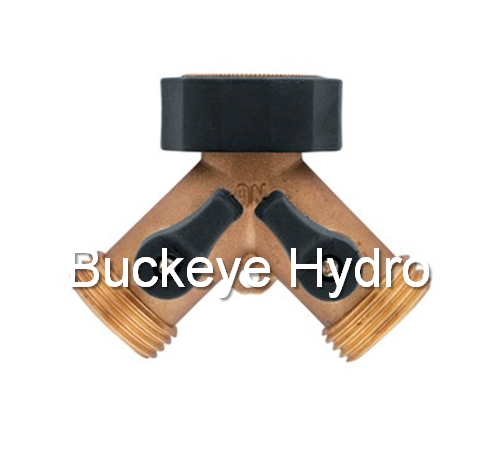brew703
Well-Known Member
Been brewing for a couple years now and alternate between distilled and filtered water (from one of those stand alone machines). From a cost perspective, $7 per brew for distilled vs $1.50 for the filtered water I've been buying.
The local Wal-Mart has a Primo water machine (self serv) but every time I go to fill my jug it's down. There is a filtered water machine by my house that I used to get water from ($1 for 5 gal) but it's not RO and the water is inconsistent plus the machine it's pretty dirty. Just really tired of going to fill my jug only to find out the machine is down then I have no choice but to go with distilled.
I've been throwing around the idea of getting a RO system but every time I get ready to pull the trigger I talk myself out of it.
Seems there are pro's and cons to all systems I have looked at and I think that's part of the reason why I talk myself out of it. Plus the cost factor. it would take me approx. 21 brews to break even which would be over a year.
I was going to just get one of the inexpensive units from Ebay but don't want the inline filters most of these use. So I found a couple that I am contemplating so would like some opinions.
#1 is a 5 stage unit from Ebay for $95. Overkill I know but there are not many 3 stage filters on the market. What I don't like about this unit is the stage 2 and 3 are the same filter so if I were to get this unit I would replace stage 3 with a 1 Micron carbon block filter. Also the RO membrane isn't a Filmtec. This would increase my cost approx. $15. Also this unit doesn't have a flush valve but I could add that for another $5-10. So now I'm at $115 to $120.
here's the link: http://www.ebay.com/itm/50-GPD-Drin...d=271575999878&_trksid=p2045573.c100033.m2042
#2 is a system from Bulk Reef Supply. it's a 4 stage which is what I want but the stage 1 and 2 are both 5 micron filters. I would prefer they would at least be 1 micron or 1 micron and .5 micron.
I'm kinda leaning towards the unit from BRS.
here's the link: https://www.bulkreefsupply.com/brs-4-stage-ro-only-system-75gpd-2.html
Any help in deciding would be appreciated.
The local Wal-Mart has a Primo water machine (self serv) but every time I go to fill my jug it's down. There is a filtered water machine by my house that I used to get water from ($1 for 5 gal) but it's not RO and the water is inconsistent plus the machine it's pretty dirty. Just really tired of going to fill my jug only to find out the machine is down then I have no choice but to go with distilled.
I've been throwing around the idea of getting a RO system but every time I get ready to pull the trigger I talk myself out of it.
Seems there are pro's and cons to all systems I have looked at and I think that's part of the reason why I talk myself out of it. Plus the cost factor. it would take me approx. 21 brews to break even which would be over a year.
I was going to just get one of the inexpensive units from Ebay but don't want the inline filters most of these use. So I found a couple that I am contemplating so would like some opinions.
#1 is a 5 stage unit from Ebay for $95. Overkill I know but there are not many 3 stage filters on the market. What I don't like about this unit is the stage 2 and 3 are the same filter so if I were to get this unit I would replace stage 3 with a 1 Micron carbon block filter. Also the RO membrane isn't a Filmtec. This would increase my cost approx. $15. Also this unit doesn't have a flush valve but I could add that for another $5-10. So now I'm at $115 to $120.
here's the link: http://www.ebay.com/itm/50-GPD-Drin...d=271575999878&_trksid=p2045573.c100033.m2042
#2 is a system from Bulk Reef Supply. it's a 4 stage which is what I want but the stage 1 and 2 are both 5 micron filters. I would prefer they would at least be 1 micron or 1 micron and .5 micron.
I'm kinda leaning towards the unit from BRS.
here's the link: https://www.bulkreefsupply.com/brs-4-stage-ro-only-system-75gpd-2.html
Any help in deciding would be appreciated.




